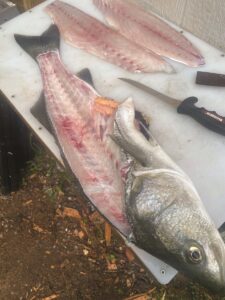New England groundfishermen complained loudly two decades ago about increasing regulation of various fisheries, notably our region’s cod and haddock, which were easily its most lucrative species. Why cut the quotas, they argued, when catches were steadily increasing every year?
The regulations were just another example of governmental overreach, they moaned to anyone who would listen. And many did because the price of fresh fish was rising precipitously. Communities where commercial trawler fishing was a major industry became focus points for every ambitious politician.
Meanwhile, the fishing regulators believed they were right. Yes, the landings were growing in size every year. But the new fishery counts, formerly based on the size of annual catches, told a different story altogether: fishing was getting better not because there were more fish, but because fishing techniques were getting better. New sonar, new water temperature and thermocline technology, and bigger, faster, and better-equipped boats had combined to outstrip the ability of target fish to replace their numbers.

Who was right? Even with stricter quotas and regulations the codfish stocks have yet to return to anywhere near historic levels. The commercial groundfish industry was, and remains, virtually closed in Canada.
So, when the new regulations for Atlantic stripers were announced, shrinking the slot limit by three inches — keepers are now 28 to 31 inches — I was neither surprised nor angry. I had seen this coming for years — since 2015 to be precise — the last year of strong striper reproduction and the year most of the spectacular fish we are now catching began making their annual migrations.
The new rules might seem to be knee-jerk overreach on the part of regulators. They are not. Fish reproduction is delineated by year-classes, not necessarily by spawning numbers. That is, by counting how many survive their egg, larval, and adolescent stages. For stripers, which spawn in the spring, this “recruitment” into a year-class takes place once regulators can determine how many have survived their difficult adolescence.
My experience tells me regulators are not capricious and care deeply about their work. Both my son, Caleb, and his wife, Emily, work for the National Marine Fisheries Service in Gloucester and are truly passionate about both the fish they manage and the fishermen who catch them. They know the science says to look to the recruitment numbers to understand the quality of fishing that lies ahead. And for stripers, nearly every year since 2015 has had dismal recruitment, with numbers well below what’s required for sustaining the overall striper population. It’s not that the Atlantic states fisheries managers just panicked. They waited for the new numbers to arrive before tightening the rules.

I wish they had prohibited altogether the keeping of stripers by both commercial and recreational fishermen. Because that’s what was done in the late 1980s when the stripers had virtually disappeared from overfishing and poor recruitment. Pausing the fishery was considered draconian, but the policy worked so well that in just four years, by 1990, the population had gone from near extinction to historic abundance.
For those unfamiliar with the striper life cycle, it is important to note that virtually all smaller bass are males, while most stripers over 32 inches are females. Some females reach sexual maturity at around the five-year mark, and by their ninth year essentially all are producing eggs. Females then continue to grow throughout their lives, and as they do they carry more eggs. This is why the “slot” rules were put in place to begin with, establishing not only a minimum size but also an upper limit to ensure that larger egg-bearing females survive to reproduce.
Closing the fishery for a few years to allow the 2015 year-class, which is now entering its egg-laying period, would make a lot of sense.
I mentioned what happened with groundfish 20 years ago because much the same reasoning is taking place again today, with people asking: “How can the fisheries be in trouble if we’re catching so many fish?”
The recreational striper kill doubled from 2021 to 2022. Part of that is about more people taking up fishing during the pandemic, I’m sure. But technology is also a factor. Fish-finding gear is so sophisticated these days that even the smallest boats equipped with $100 finders can tell you how big, how many, and how deep the stripers are. Finding the fish from a boat seems almost unfair.
One of the reasons I enjoy beach fishing so much is that the only technology that truly counts is a good pair of binoculars, a trusty rod and reel, and one’s accumulation of experience and knowledge about when and where fish might be encountered. I’ll rue the day a drone gets used to locate the fish along the shore. And I’d gladly give up a year or three of striper dinners to ensure my grandkids get the chance to enjoy the fishing and eating as much as I have.



